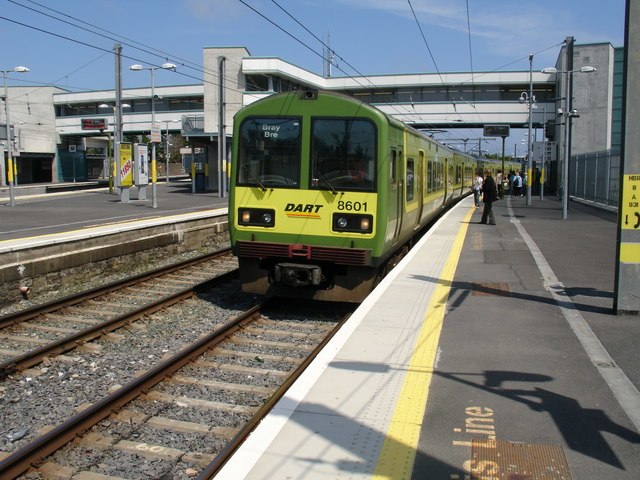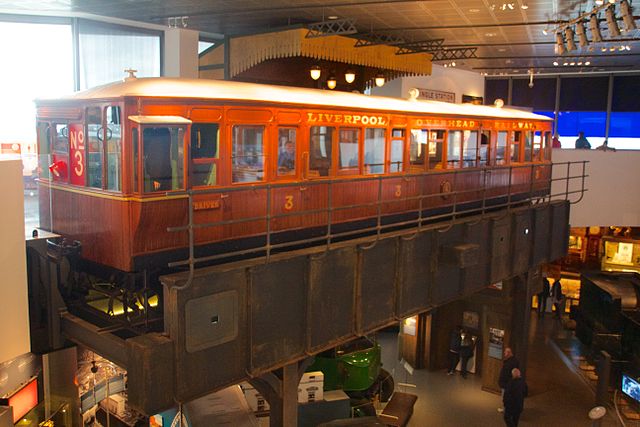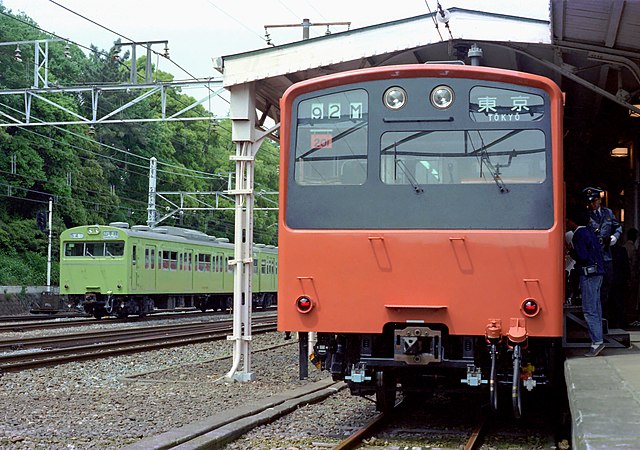The 103 series is a DC electric multiple unit (EMU) commuter train type introduced in 1963 by Japanese National Railways (JNR), and currently operated by West Japan Railway Company and Kyushu Railway Company. They were also operated by East Japan Railway Company and Central Japan Railway Company.
JR West 103 series trains in various liveries at Suita Depot in October 2017
JR West 103 series Osaka Loop Line, KuHa 103-1, January 2007
JR East 103-1000 series in emerald-green Jōban Line livery, April 2003
Revised livery with light blue stripe, May 2003
An electric multiple unit or EMU is a multiple-unit train consisting of self-propelled carriages using electricity as the motive power. An EMU requires no separate locomotive, as electric traction motors are incorporated within one or a number of the carriages. An EMU is usually formed of two or more semi-permanently coupled carriages, but electrically powered single-unit railcars are also generally classed as EMUs. The great majority of EMUs are passenger trains, but versions also exist for carrying mail.
A DART 8500 class commuter EMU at Howth Junction railway station, Ireland.
A 6-car Siemens Nexas EMU arrives at Flinders Street station on the Upfield service in Melbourne, Australia.
A Liverpool Overhead Railway carriage in the Museum of Liverpool. The first EMUs in 1893.
The prototype unit of JNR 201 series on public display at Harajuku Station in Tokyo, 13 May 1979. Next to it, a Yamanote Line's 103 series train can be seen passing through








